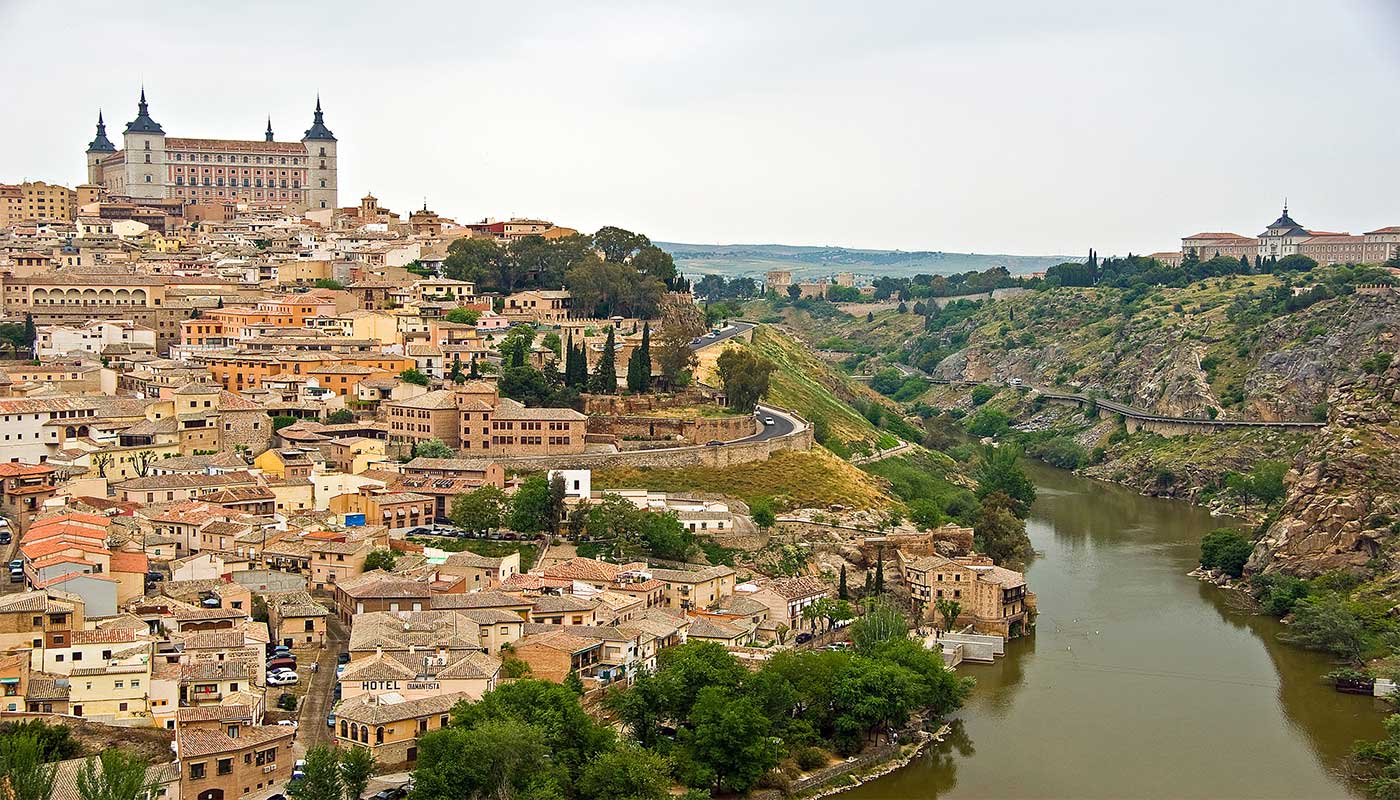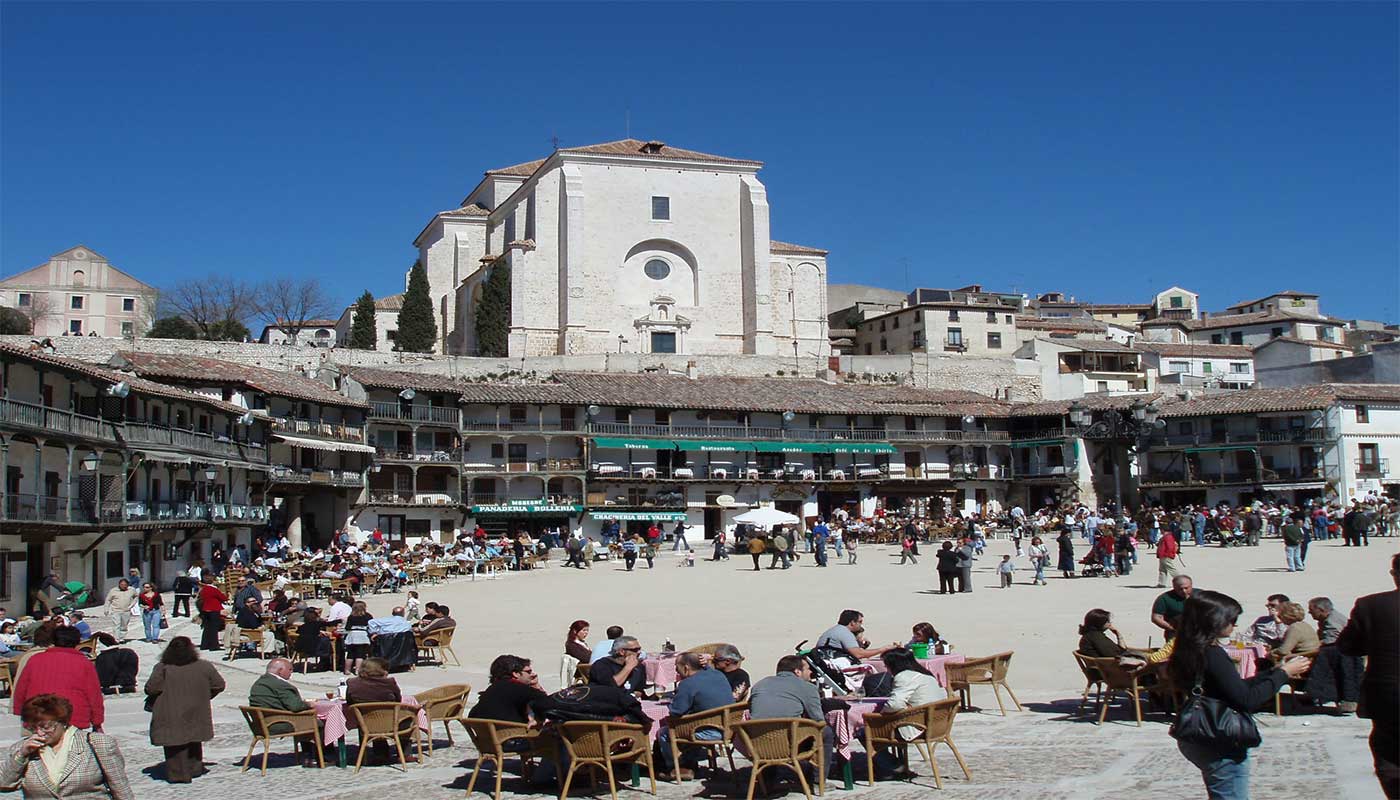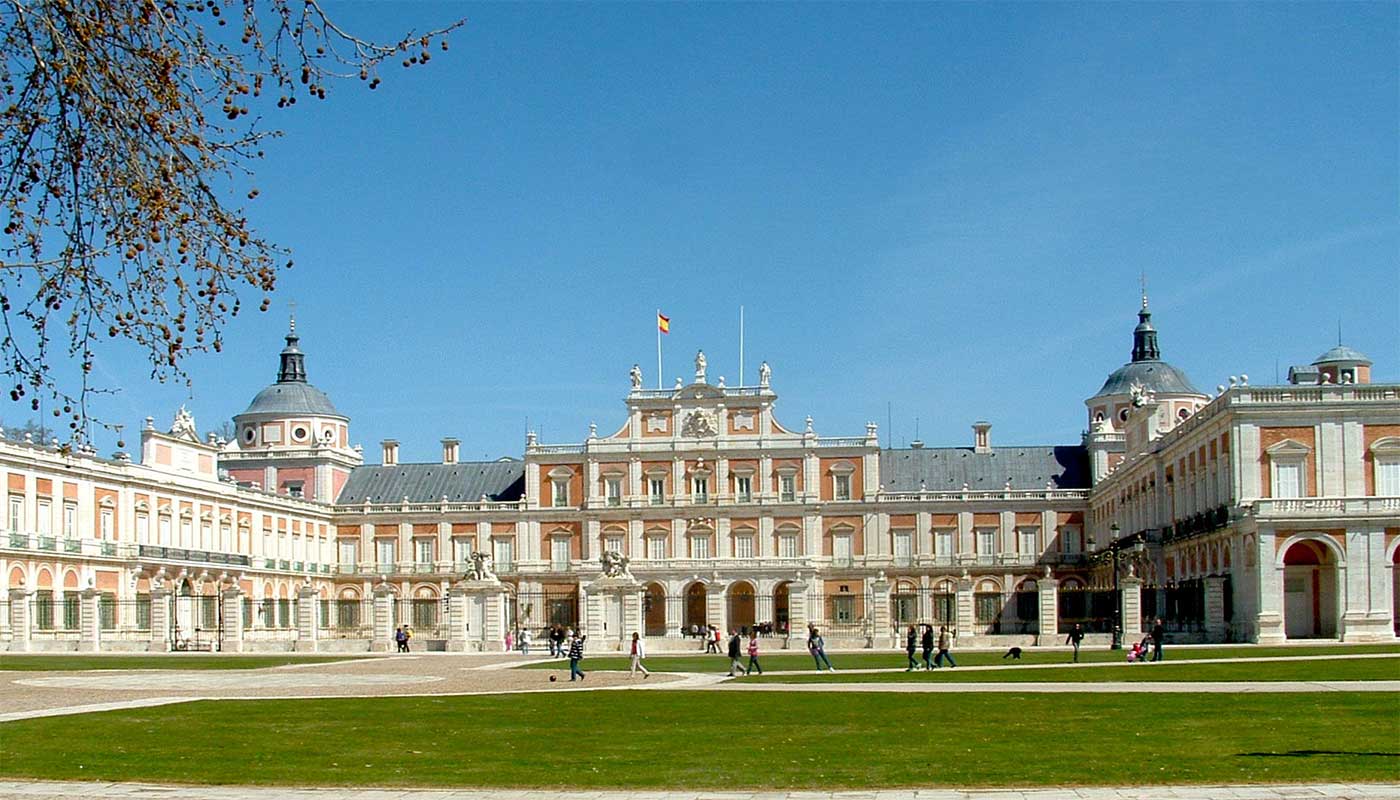Toledo – Aranjuez – Chinchón

This is a great tour to know the history and culture of Spain.
Toledo
Toledo is known as the “Imperial City” for being the main headquarters of the Court of Carlos I and also as “The City of Three Cultures”, for being populated for centuries by Christians, Jews, and Muslims.
The history of the city dates back to the Bronze Age. It was an important carpetano center until the Roman conquest in the 193b.C. There are various remains of Roman activity in the city, such as the aqueduct or the circus. In the year 711, Toledo is conquered without little opposition from Muslims being conquered back by Alonso VI in 1085. Traditionally, the metallurgical industry has been the economic basis, mostly by making their very famous swords and knives.
During the early modern period the city highlight as the headquarters of the Catholic Monarchs and their participation in the war of the communities of Castilla. In contemporary times, Toledo and more specifically, its Alcazar became a symbol of the civil war during his long “Siege of the Alcazar. In 1983 it became a capital of Castilla – La Mancha.
Toledo has numerous places of interest and is World Heritage since 1987. They include the Monastery of San Juan de los Reyes, Gothic isabelline of the VX century and the Cathedral of Santa Maria, the XIII century of Gothic style as well. Toledo was also place of birth or residence of artists such as Garcilaso de la Vega and El Greco.
Aranjuez
It is one of the Royal Sites in the Crown of Spain since Philip II so named in 1560. It also has the title of town since 1899, which is why it is also known as Real Sitio and Villa de Aranjuez.
It is famous for its Royal Palace, its gardens and the grid layout of its streets. Also for the cultivation of strawberries and asparagus and for having inspired the composer Joaquin Rodrigo to compose the world famous Concert of Aranjuez. It is also very famous the Mutiny of Aranjuez, which took place in this town in 1808, and ended with the abdication of Charles IV in favor of his son Ferdinand VII. The cultural landscape of Aranjuez was declared a World Heritage Site by UNESCO in 2001.
The Royal Palace of Aranjuez: One of the residences of the Spanish Royal Family. It was built by Philip II of Spain, who entrusted the project to architect Juan Bautista de Toledo, who died during construction, so his disciple Juan de Herrera was commissioned to complete its construction.
It is an architectural work of great beauty which include the China Chamber or Porcelain Room and the Hall of Mirrors. The palace also has vast and beautiful gardens by the river Tajo.
The gastronomy of the town is exquisite and in summer it is very common to go to dinner along the river Tagus. The pheasant, bird characteristic of its forests, is a typical dish that also supports varied preparations and presentations. Strawberries and asparagus are of the highest quality and are considered among the best in Spain.
Chinchón
Chinchon is a Spanish municipality located in the southeast of Madrid, in the county of Las Vegas, fifty kilometers from the capital.
Its history dates back to the Neolithic period (8500 BC). It has also been found remains of an Iberian town or celtibero (sixth century BC). Later in history in 1085, Chincho served as a bastion to coordinate the conquest of Toledo by Alfonso VI of León (The Brave).
In 1480, it becomes dominion, that’s when the castle of Chinchon, renaissance style was built. It was destroyed in 1520, then rebuilt and partially destroyed again in 1706. During this period the Plaza Mayor stands as the center of government power and most of its baroque buildings were built.
In 1738, the county passed, by purchase, at the hands of the House of Bourbon and Farnese, and a year later he was awarded the title of Villa Very Noble and Loyal. The declaration of good historical interest and the city title granted by Alfonso XIII marks the current Chinchon.
Chinchon Plaza Mayor: It’s a classic square of the Middle Ages. The first houses with porches and balconies were built in the fifteenth century and was completely closed in the seventeenth century.
Church of Nuestra Señora de la Asunción: Its construction started in 1534 as attached to the county palace chapel. It is a project of Gothic architecture.
Notably, in the center of the main altarpiece, the magnificent painting of the Assumption of the Virgin painted around 1812 by Francisco de Goya on behalf of his brother Camilo, chaplain of the Counts.
To book this tour please contact us through our contact form or making click in the below green button. We will be in touch with you shortly and will provide you with price and details.
Are you in a tour mood?



